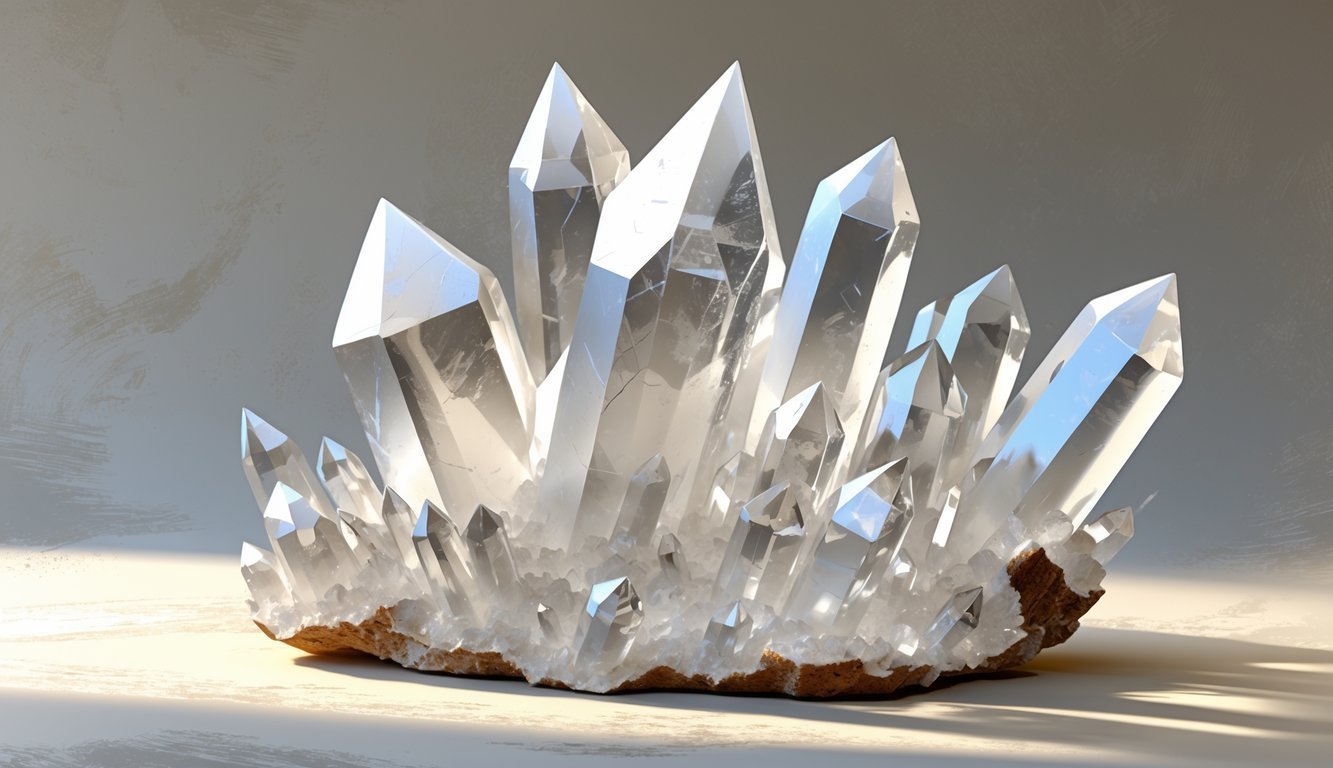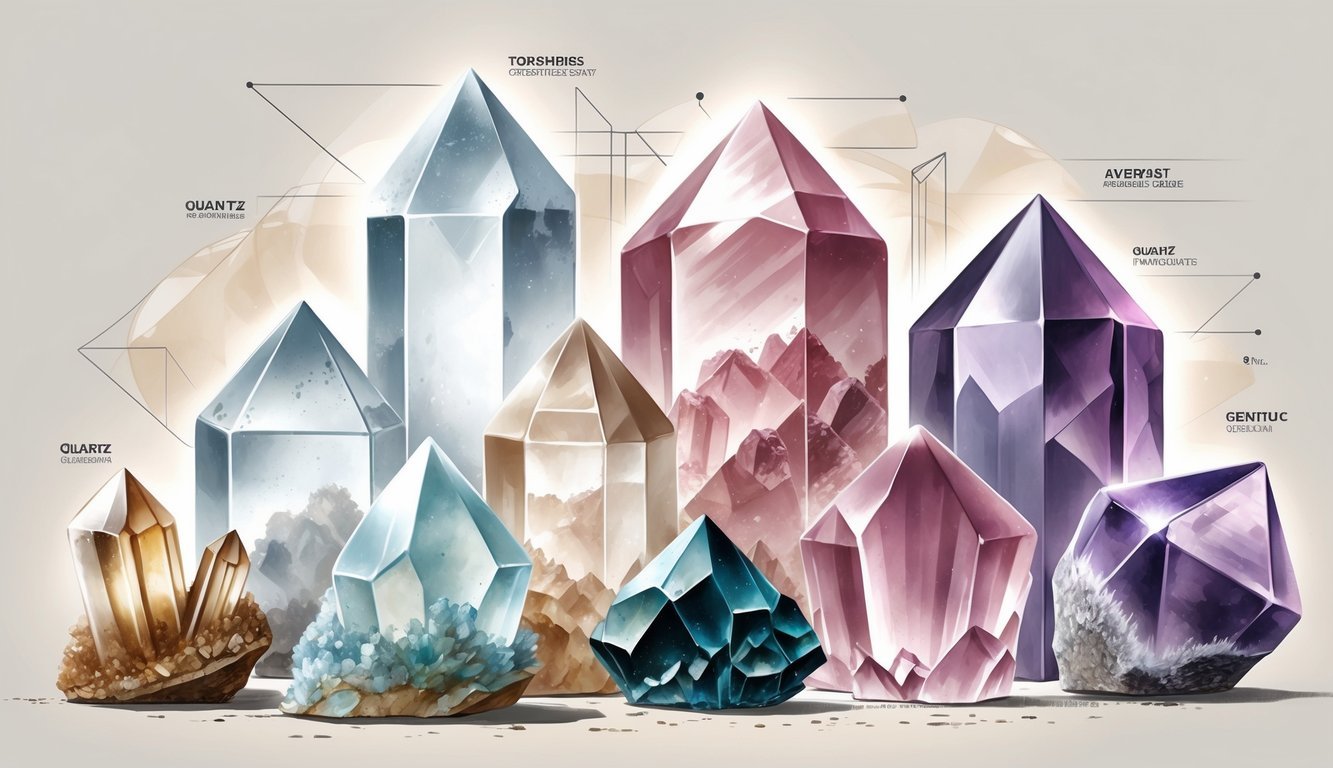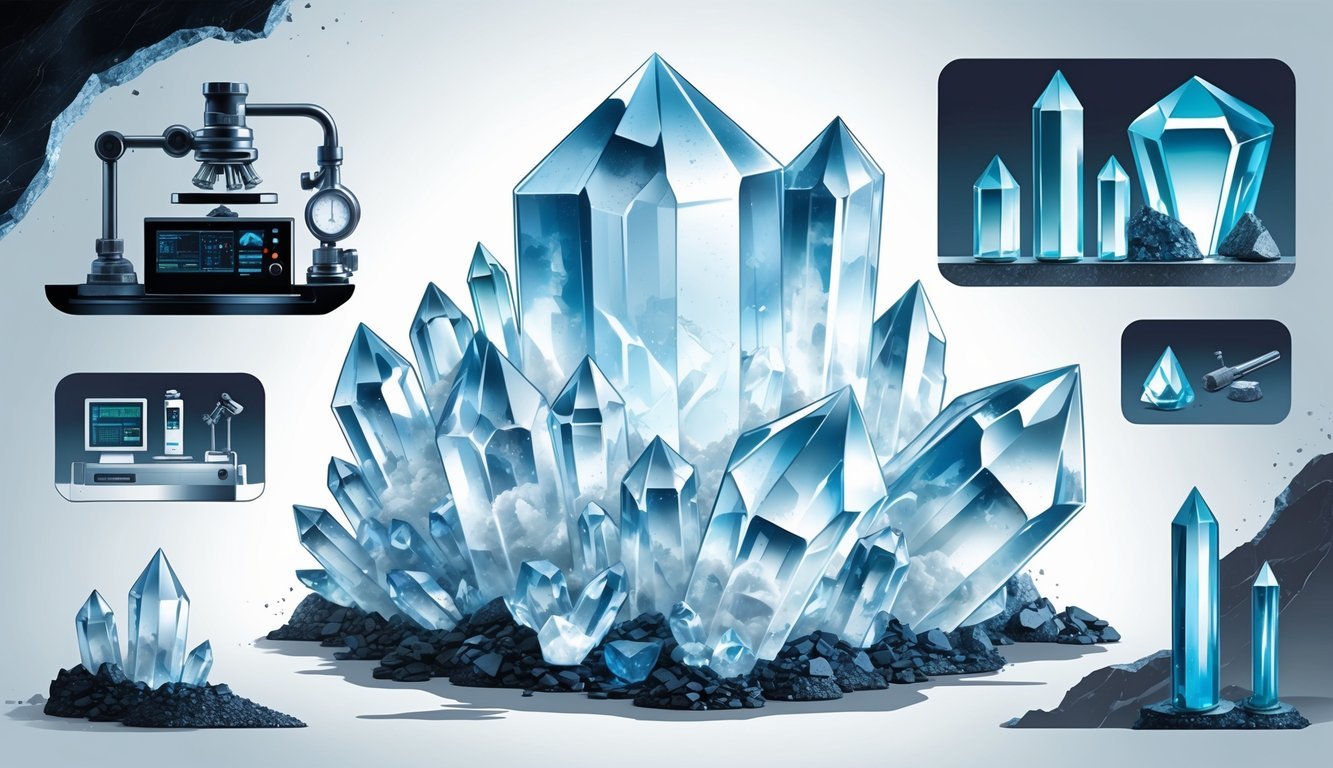PsychNewsDaily Publishers
100 Summit Drive
Burlington, MA, 01803
Telephone: (320) 349-2484
PsychNewsDaily Publishers
100 Summit Drive
Burlington, MA, 01803
Telephone: (320) 349-2484
Raw quartz, primarily silicon dioxide, is a versatile mineral used in jewelry, crafts, and healing practices, exhibiting various colors and shapes in its natural state.

Raw quartz shows up everywhere in the Earth’s crust. It’s mostly silicon dioxide, and you’ll spot it in a rough, wild form before anyone polishes or shapes it into gemstones.
People love raw quartz for its natural beauty. You’ll see it used in crafts, jewelry, and sometimes in healing practices.
You might stumble across raw quartz in all sorts of colors and shapes, and it usually stays rough and jagged after mining. That natural look makes it a favorite for mineral collectors or anyone making handmade jewelry.
If you know a bit about raw quartz, you can appreciate where it comes from and how people use it.
Maybe you want to know how quartz forms, or maybe you’re curious about why it’s so handy. Either way, learning about raw quartz is a good start.

Raw quartz is a pretty versatile mineral. It comes in all sorts of forms, colors, and sizes.
You’ll see it as clear crystals or dense, fine-grained stones. Its physical traits make it useful for gemstones and a bunch of other things.
The look and feel can really change depending on the type and what’s inside.
Quartz is just silicon dioxide (SiO₂)—that means silicon and oxygen atoms locked together in a tight crystal pattern. This gives quartz a hardness of 7 on the Mohs scale, so it stands up well to scratches.
You can expect a shiny, glassy surface (that’s called luster), and it can be see-through or cloudy—people call that diaphaneity.
Quartz crystals usually grow in a hexagonal shape, sometimes with pointy ends called crystal points or clusters. It also does something cool called piezoelectricity—basically, it can make electricity if you squeeze it, which is why it shows up in tech and healing tools.
Quartz comes in two main types, depending on the crystal form.
Each type feels different and gets used for different things. Crystalline quartz gets cut into gemstones and points, while cryptocrystalline quartz is usually made into cabochons or carvings.
Raw quartz comes in a rainbow of colors. You’ll see milky quartz (white), rose quartz (pink), smoky quartz (gray or brown), and sometimes rare colors like blue quartz or prasiolite (green).
Some pieces even show mixed colors, like ametrine, which is purple and yellow in one stone.
Inclusions—tiny bits trapped inside the quartz—can make each piece special. You might spot needle-like minerals in rutilated quartz or colorful flashes in rainbow quartz.
These little details make every stone unique (or OOAK, as collectors say).
People who love handmade jewelry or collecting stones often look for quartz with clear color, sharp points, or interesting patterns.

Raw quartz pops up everywhere, in all sorts of shapes and places. Its uses go way beyond just being pretty.
You’ll find it in nature, in jewelry, and even inside your gadgets. If you know where it comes from and how it’s used, it’s easier to see why people care so much about it.
Raw quartz forms in igneous, metamorphic, and sedimentary rocks. It shows up in quartz veins inside igneous rocks or as part of sandstone and quartzite in sedimentary layers.
Quartz is tough and resists weathering, so it sticks around for a long time.
You can find big quartz deposits in countries like Brazil, China, Russia, France, and Japan. Riverbeds and mountains are great places to look for quartz stones.
Different forms, like flint and quartz crystals, come from these wild settings.
You can use raw quartz in all kinds of art and decoration. Its clear, shiny look makes it a favorite for jewelry like pendants and rings.
Artists and craftspeople carve quartz into all sorts of designs.
A lot of folks buy quartz on sites like Etsy for meditation or to help with manifesting intentions. Some believe in its healing properties and energy-boosting abilities.
Raw quartz also shows up in home installations or art pieces that play with light and clarity.
Raw quartz matters a lot in industry. People use it to make glass, ceramics, and abrasives like whetstones for sharpening.
In tech, fused quartz is super useful for making optics and oscillators because it stays stable.
Quartz fibers go into high-strength cables and insulation, giving them more traction and durability. Its resistance to heat and chemicals means it works for everything from precision tools to big industrial machines.

Raw quartz can do a lot, from decorating your home to personal care. How you use and care for it really depends on your own style and what you want from each piece.
You can put raw quartz in your room to make the space feel brighter. Some people add it to their work area to bring a calmer vibe or just to enjoy the look.
You could also toss a piece into a water bottle or set it in a small garden. Just make sure it’s clean before it goes near food or plants.
A lot of folks believe raw quartz helps clear the mind and boost energy. Some say it brings balance and helps with focus.
People like to use it during meditation or carry it to ease stress. But honestly, these effects come from tradition and personal stories, not hard science.
Look for stones that don’t have too many cracks or cloudy spots. Clearer crystals usually last longer and are said to have better energy.
Check the size and shape so it fits what you want. Always buy from a seller who tells you where the quartz came from.
High-quality raw quartz looks clear, with few blemishes or odd colors. It should feel heavy for its size and have sharp, defined edges.
Skip stones that feel too light or look dull—they might be fake or just not in great shape.
You can clean quartz by rinsing it in water or leaving it in the sun for a few hours. Some folks use salt or bury it in soil overnight to clear away bad vibes.
To charge it, try leaving your crystal under the moonlight or holding it while you focus on your intentions.
Yeah, people actually use raw quartz in handmade jewelry all the time. Its natural shape gives rings, necklaces, or bracelets a unique and rustic vibe.
You’ll probably want to wrap it with wire or set it in metal to hold it in place.